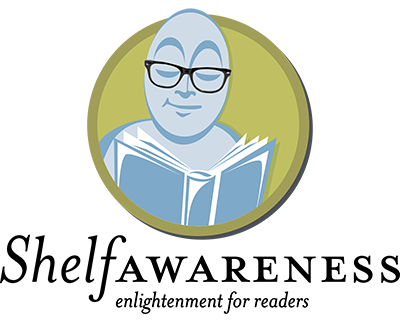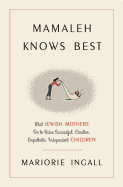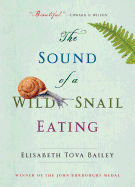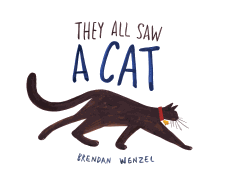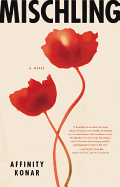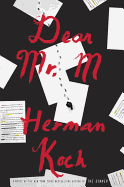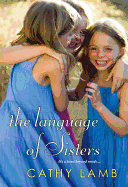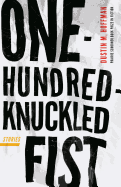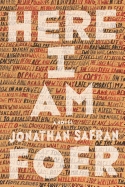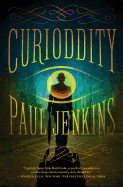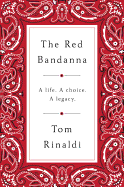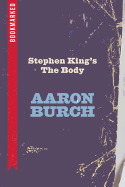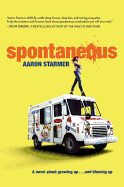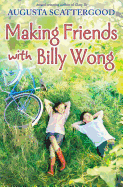Friday, September 2, 2016
Literary pilgrimages are a specific type of travel--we venture to hallowed ground, we wander through dark houses, stand above eroded gravestones, selfie before empty facades, meander around gardens. All because we read a book, and experienced wonder; we are well aware a person crafted that wonder, and we want to be near its setting, or its author's.
 England is the land of language wielded with such force, such beauty, such knowledge and wisdom. It produced William Shakespeare, the brooding Brontës, the daring Woolf, the witty Austen, the crafty Dickens, the naughty Lawrence, the sublime Wordsworth, the enigmatic Sterne, the fantastical Tolkien....
England is the land of language wielded with such force, such beauty, such knowledge and wisdom. It produced William Shakespeare, the brooding Brontës, the daring Woolf, the witty Austen, the crafty Dickens, the naughty Lawrence, the sublime Wordsworth, the enigmatic Sterne, the fantastical Tolkien....
A pilgrimage there is plunging into a canon so canonical it is beyond the great and good volumes of the British Library. So, we brought our books to England. In London, traveling companions reread Dickens and Doyle, but also the lovely Will in the World by Stephen Greenblatt, which enhanced the trip to Stratford-upon-Avon, where some pored over Emma Smith's Shakespeare's First Folio: Four Centuries of an Iconic Book, while others read aloud Anthony Burgess's underappreciated Nothing Like the Sun.
 We traded Persuasion back and forth as we trimmed hedge-lined roads in Hampshire too narrow for cars, read Sons and Lovers in the dim coal towns of Nottingham, and discussed Wuthering Heights and Jane Eyre walking the sheep-speckled moors in lovely weather. Of course, in the Lake District, we quoted our favorite Romantics and raised our eyebrows at Confessions of an English Opium Eater by Thomas De Quincy.
We traded Persuasion back and forth as we trimmed hedge-lined roads in Hampshire too narrow for cars, read Sons and Lovers in the dim coal towns of Nottingham, and discussed Wuthering Heights and Jane Eyre walking the sheep-speckled moors in lovely weather. Of course, in the Lake District, we quoted our favorite Romantics and raised our eyebrows at Confessions of an English Opium Eater by Thomas De Quincy.
There were so many biographies, so many retellings of everything Austen, photocopies of The Atlas of Literature, and a much-abused map--Bloomsbury looked like an abstract impressionist painting.
We returned with images of ourselves playing a version of bocce ball beside Virginia Woolf's writing cabin and grinning before a photo of A.A. Milne in a bar in Cambridge. All of it leads one to want to read more books, and then of course, to find where the inspiration started, ended, continues.... --Chris Priest
Mischling
by Affinity Konar
Affinity Konar's novel Mischling is set largely in Auschwitz, mainly in Josef Mengele's "Zoo," where the infamous Nazi doctor performed grotesque experiments on "undesirable" twins and others. Mischling commits to a child's-eye perspective on the horrors, and it's to Konar's credit that the novel manages to be as much about the perils of sisterhood as it is about the tragedy of genocide.
Konar's (The Illustrated Version of Things) main characters are identical twins Pearl and Stasha, children forced to reckon with their emerging adolescence under the most difficult circumstances imaginable. They are selected by Mengele to live and suffer in his Zoo, undergoing painful medical procedures that unnaturally differentiate them--physically and mentally--in ways that threaten their sibling bond. Mischling is a German term meaning "mixed-blood"--the word used by the Nazis to describe people with a mix of Jewish and "Aryan" blood or, as Pearl and Stasha's father puts it: "absurd, hateful tests that tried to divide our people down to the last blood drop and marriage and place of worship."
A story of survival, it also follows the two girls' heroic, almost spiritual quest not to grow apart. Konar doesn't attempt to unspool Mengele's fathomless psyche, and by the end of the novel, his bizarre ability to shift seamlessly from playing with children to torturing them with absurd experiments remains as inexplicable and terrifying as ever.
Mischling is never solely defined by the horrors of its setting. Moments of beauty emerge unexpectedly and stick with the reader long after the book is over. --Hank Stephenson, bookseller, Flyleaf Books
Discover: A pair of twins in Josef Mengele's infamous "Zoo" struggle to survive the horrors of the Holocaust.
Dear Mr. M
by Herman Koch, transl. by Sam Garrett
Herman Koch has carved out a niche as the Dutch literary bad-boy. In The Dinner, he skewered the idle rich. He followed that with Summer House with Swimming Pool, which cleverly unmasked corruption in medicine. With Dear Mr. M, Koch takes apart the world of writers, books and publishing in a funny, metafiction mystery about the unsolved disappearance of a high school teacher in a tawdry love triangle with two students.
Aging Mr. M has written a string of midlist World War II novels after a surprise bestselling mystery based on news reports of the teacher/student scandal. His reputation is on the skids when he is confronted by Herman, the teen suspected of murdering his history teacher. Herman stalks Mr. M--with letters, by shadowing his travels, even by moving into the apartment below him. Mercilessly ridiculing Mr. M's writing ("You take a bite and start chewing, but it doesn't taste like much"), Herman follows him to bookstore signings, library readings, and an award ceremony for writers "whose greatest similarity was that none of them had long to live." Dear Mr. M not only provides Koch with a platform to whale on writers, but it is also a story steeped in the abysmal culture of high school, where he takes on teachers who represent "a herd of an extremely mediocre species." Koch can be challenging, but he is always rewarding. As Mr. M muses about his profession, "A reader reads a book. If it's a good book, he forgets himself. That's all a book has to do." --Bruce Jacobs, founding partner, Watermark Books & Cafe, Wichita, Kan.
Discover: Koch puts his considerable literary skills on display in a shifting point-of-view exploration of writers, publishing and the roots of fiction.
The Language of Sisters
by Cathy Lamb
Cathy Lamb (Such a Pretty Face, The Last Time I Was Me) has created a compelling family saga in The Language of Sisters. As children in the dreary Soviet Union, Antonia, Valeria and Elvira Kozlovskaya struggled to find enough food to eat, often reduced to picking pockets to help support their ill mother, while their father, an outspoken intellectual, was in jail.
Fast-forward a quarter-century, and Toni, Valerie and Ellie Kozlovsky are part of the big, extended, happy Kozlovsky family, who now live in Portland, Ore. All three sisters have successful careers, but none of them are content. Toni wants to quit her job as a crime reporter and is struggling in her current relationship. Valerie is prosecuting a murder trial where the defendant's relatives have threatened to kill her. And Ellie is beginning to realize she doesn't actually love her fiancé.
The Language of Sisters boasts a full cast of hilarious relatives, like Boris the car-stealing cousin; Svetlana, the girls' larger than life mother--who broadcasts family problems on the specials board at her restaurant with dishes like "Valeria No Call Mama Enough" or "Elvira's Bad Choice"; and cousins Tati and Zoya, twins who specialize in creating stripper couture. The eclectic personalities neatly balance the dark drama of the sisters' early life with their struggles and funny moments in the present day. Readers are likely to relate to many problems the sisters face, while also being a little jealous of the Kozlovsky family bond. --Jessica Howard, blogger at Quirky Bookworm
Discover: This funny and poignant saga features three sisters who are part of a huge Russian American family.
One-Hundred-Knuckled Fist
by Dustin M. Hoffman
Hoffman was a house painter for 10 years, but it is his craftsmanship with the written word that infuses these stories with visceral atmosphere, often to the point of being gut knotting. A commission salesman is stressed about making enough sales so that his manager's children can eat; an ice cream truck driver, despite beatings from rival thugs, keeps going to save money for his estranged children; a hardscaping crew is driven to violent conflict after a verbal sparring session goes awry. Hoffman shines a light on some dark slices of life in the trenches.
These are not easy stories. They are by turns crude, violent, outlandish, harsh and sometimes outright bizarre. But Hoffman paints them with lines of beauty, determination and subtle humor that keep them from devolving into an exercise in depression. They are as varied as the trades they depict, but across the board they are engaging, bursting with authenticity and often just plain brilliant. --Lauren O'Brien of Malcolm Avenue Review
Discover: This set of 16 stories takes the reader on a compelling trip through the pressure-cooker world of the blue-collar worker.
Here I Am
by Jonathan Safran Foer
Here I Am, the first novel in 11 years from Jonathan Safran Foer (Extremely Loud and Incredibly Close), is his most ambitious and probing yet. It signals the accomplishment of a writer in full control of his extraordinary creativity for revealing how ordinary people respond to their fracturing world.
Jacob Bloch and his wife, the parents of three boys in Washington, D.C., prepare for their eldest son's bar mitzvah as their marriage collapses, against the global backdrop of a devastating earthquake and escalating conflict in the Middle East. Jacob is consumed by his need to understand himself, his family and his Jewish identity, both in the United States and in Israel. He is well meaning but cannot escape his own repression, which stifles his ability to connect, to feel and to act, with inevitable costs to his marriage and other relationships.
What he can do is talk. He offers us his take on life's biggest moments and its most intimate and shaming; he considers the Jewish American response to the Holocaust, confesses details of his sex life, and, with the same unblinking wit, explains his furtive attempts to relieve constipation. This blending of big and small ensures that the novel never falls into self-importance despite its ambition.
Foer's inventiveness and his willingness to reveal his characters' vulnerabilities by putting them in situations that challenge their most fundamental assumptions have always characterized his novels. In Here I Am, these qualities are as energetic and dazzling as ever and are in full service of a big, important novel from a confident, mature writer. --Jeanette Zwart, freelance writer and reviewer
Discover: Jonathan Safran Foer uses his signature energy and inventiveness to tell the story of a man confronting his collapsing marriage.
Science Fiction & Fantasy
Curioddity
by Paul Jenkins
In Wil Morgan's life, ordinary events in a dull environment are the norm. His job as a private investigator specializing in divorce and insurance fraud gives him little joy or money to pay his bills. On his daily trudge to work, past the giant billboard of Marcus James, "national TV personality... [who] possessed the ability to persuade millions of people to part with something useful in exchange for something useless," Wil's only moments of pleasure are when he allows himself to reminisce about his childhood and his mother, who was able to show him the magic in everything. But Melinda Morgan died when Wil was 10, and with her died Wil's ability to see the world in a different light. That is, until Mr. Dinsdale, curator of the Curioddity Museum, appears in his office to hire him to search for a box of levity (the opposite of gravity) that has gone missing from its exhibit in the museum.
Known for his graphic novels and video game stories, Paul Jenkins has written a droll debut mystery full of odds and ends, moving crates, perpetual motion machines and a host of other items that look like junk only to those who don't know how to un-look at the world. His story quickly builds into a pell-mell scramble to save the Curioddity Museum from going under, courtesy of the twisted business practices of the conniving Marcus James. Quirky to the core and full of wordplay, Curioddity examines the magic inherent in life that many may have forgotten exists in a world full of technical gadgets, regulations and network shopping channels. --Lee E. Cart, freelance writer and book reviewer
Discover: Curioddity is an offbeat, magical detective story that blends elements of Neil Gaiman's Neverwhere with Robin Sloan's Mr. Penumbra's 24-Hour Bookstore.
Biography & Memoir
The Red Bandanna
by Tom Rinaldi
Tom Rinaldi's The Red Bandanna is ample evidence that compelling stories about September 11, 2001, remain to be told. Following the attacks, survivors mentioned a man wearing a red bandanna who repeatedly led others to safety, only to go back up into the inferno. They didn't know who he was, only that he saved their lives. One woman read about that man and knew she had found her son.
At the heart of this remarkable account of selflessness is 24-year-old Welles Crowther, who dreamed of being a firefighter and had carried that bandanna every day since he was seven. It is a story about what defines September 11--acts of compassion, sacrifice and heroism. It is the account of an extraordinary young man, those he left behind and the lives he saved, forever bound by a red bandanna.
During President Obama's speech at the 2014 memorial museum dedication, he shared one story of valor and mentioned Welles Crowther, a volunteer firefighter, by name. His story reminds readers to bear witness; that in times of tragedy, heroes are among us and perhaps even inside us.
Rinaldi, a reporter for ESPN, writes in a straightforward manner that feels rather staid for the first portion of The Red Bandanna. But as the story shifts to 9/11 and beyond, that tone is perfect, allowing the facts to convey the drama without becoming overwrought. Grab a blanket, you're going to suffer more than one case of the chills as you work through this one. --Lauren O'Brien of Malcolm Avenue Review
Discover: A gripping story of courage, family and bonds forged by tragedy, The Red Bandanna is an admirable addition to the annals of 9/11.
Essays & Criticism
Stephen King's The Body: Bookmarked
by Aaron Burch
Ig Publishing's Bookmarked series features writers contemplating the literature that has made deep impressions on their lives and work. Aaron Burch's entry is Stephen King's The Body, a brief but incisive consideration of King's novella and Burch's life in ways that surprise the author and intrigue the reader.
"The Body" is one of four novellas in King's Different Seasons. It is perhaps better known for the film adaptation, 1986's Stand by Me. Burch's lifelong fascination with King began with the movie; he writes here about coming later to King's written work as he becomes a reader, a writer and a teacher. King's protagonist, Gordie Lachance, is also a writer and very much resembles King himself. The layers of meta-awareness continue in Stephen King's The Body: Burch refers to his writing of the book and to its earlier drafts.
Although "The Body" and Stand by Me provide the framework for Burch's contemplation, his work is at least as much self-reflective memoir or personal essay as it is literary criticism. He is a striking character who has a complicated relationship with art--the art he produces (up until now, only fiction) and the art he enjoys.
He elaborates on King's themes of loss and friendship with those of transitions, of firsts: first date, first kiss, first job, first road trip. As Gordie (or King) writes, "There's a high ritual to all fundamental events... the rites of passage, the magic corridor where the change happens." The beauty of Stephen King's The Body is in Burch entering that magic corridor, and splitting the experience wide open. --Julia Jenkins, librarian and blogger at pagesofjulia
Discover: A writer's examination of the writing that shaped him yields layers of self-awareness.
Nature & Environment
The Sound of a Wild Snail Eating
by Elisabeth Tova Bailey
When Elisabeth Tova Bailey was laid flat after a serious illness and successive relapses, her interactions with the outside world were drastically reduced. She had a caretaker to help her, and friends and family who came to visit, but her day was condensed into a series of moments. She writes, "each moment felt like an endless hour, yet days slipped silently past. Time unused and only endured still vanishes, as if time itself is starving, and each day is swallowed whole, leaving no crumbs, no memory, no trace at all."
So when a friend brought a land snail living in a pot of violets to her room, Bailey began watching the snail go about its daily life. With her own life slowed to a snail's pace, Bailey became absorbed in the little creature she was now cohabitating with. She studied its eating habits--listening to it munch on wilted flower petals or a piece of portobello mushroom in the dark of the night--and its sleeping patterns, and she examined the way it moved on its slime trail.
She also did tremendous research on snails, reading old books written by naturalists and scientists, and she deftly interweaves what she discovered about the gastropod into her narrative. Although illness forced Bailey's life to come to a screeching halt, her writing in The Sound of a Wild Snail Eating is a meditation and a call to slow down, to take life at a more leisurely pace, so that nothing, even something as seemingly inconsequential as the life of a land snail, is missed. --Lee E. Cart, freelance writer and book reviewer
Discover: When a serious illness leaves a woman bedridden, she learns to enjoy watching the daily routines of a land snail.
Parenting & Family
Mamaleh Knows Best: What Jewish Mothers Do to Raise Successful, Creative, Empathetic, Independent Children
by Marjorie Ingall
Most parenting literature seems to fall into one of two camps. The first is usually science-based, shockingly serious and earnest as it tries to convince you of the best ways to raise your child. The other is humorous, admitting from the get-go that childrearing is a chaotic, funny mess that is more lived-through than truly controlled. Marjorie Ingall's Mamaleh Knows Best falls into the latter category, a witty look into Jewish culture and parenting practices over the ages. It also serves as a journal for Ingall's own motherhood, which is where Mamaleh truly shines.
Ingall has been a freelance writer and columnist for publications such as Tablet, a magazine that focuses on Jewish life. Writing about experiences with her children and her Jewish identity are familiar territory for Ingall, which gives Mamaleh Knows Best a comfortable feeling, as if she is talking with readers over coffee instead of writing a guide for raising kids. She also writes for a range of readers, showing that different communities around the world have come to similar conclusions about the best way of living.
That "best way of living" isn't lip service. In addition to providing tips that might make a reader's child successful, Ingall also encourages her readers to teach their children to be kind, empathetic and justice driven. And she shows how she's tried, failed and succeeded in teaching the same to her own children. By demonstrating her flaws, Ingall makes it clear that there is no magic bullet to raising good kids, just persistence. --Noah Cruickshank, marketing and development manager, Open Books, Chicago, Ill.
Discover: Marjorie Ingall's look at Jewish parenting is equal parts funny and profound.
Children's & Young Adult
They All Saw a Cat
by Brendan Wenzel
As a striped cat with a red collar and golden bell walks through the world, all sorts of other creatures see that cat through their own lenses, and, page by page, the cat transforms accordingly. It's an ingenious idea, gorgeously realized in Brendan Wenzel's (Some Bugs; Beastly Babies) author-illustrator debut, They All Saw a Cat.
From the child's perspective, the bell-collared cat is big and furry, with a friendly, cartoonish feline face and a long, ankle-circling tail, the purring all but audible. The text is spare, but lilting: "The cat walked through the world, with its whiskers, ears, and paws.../ and the child saw A CAT." On the next spread, "the dog saw A CAT," and the scenario is not nearly as cozy this time. Here the cat is elongated, mostly limbs and tail, stealthy and suspicious. The cat's bell is huge compared to its body, as a keen-eared dog might perceive it. After a quick chase from a fox, whose fierce stare reduces it to a softly rounded, adorably edible scaredy cat, the feline resumes its more dignified cat shape and keeps on walking.
Each delightfully composed spread is a dramatic commentary on the power of point of view, and the artwork is a splendid showcase of eclectic styles and techniques, rendered in "colored pencil, oil pastels, acrylic paint, watercolor, charcoal, Magic Marker, good old number 2 pencils, and even an iBook." And so we have They All Saw a Cat, a picture book that seems so light on its little cat feet but that goes right to the core of human experience. A keeper. --Karin Snelson, children's & YA editor, Shelf Awareness
Discover: A child, a flea, a dog, a bird (and more!) see the same cat through very different eyes.
Spontaneous
by Aaron Starmer
After the first senior messily explodes in New Jersey's Covington High School, panic ensues and theories circulate. Suicide bomb? Terrorists? Drugs? Virus? The power of negative teenage emotions? But after the second, third and fourth students blow up, everybody's pretty sure it's spontaneous combustion.
Mara Carlyle, a Covington senior who has the misfortune of witnessing the first several incidents, is understandably anxious about being next, although her snarkiness remains intact: "[T]o understand my story, you're going to have to get to know at least a few people, including a few who blow up." As students continue to explode, the senior class is rounded up, medically evaluated and quarantined. The FBI is called in. ("[H]er name was Carla Rosetti and how could she not be an ass-kicking federal agent with a name like that?") Meanwhile, Covington's seniors are faced with abrupt and brutal answers to the questions they're only supposed to be starting to pose: what does it mean to say good-bye, to grow up, to love and lose someone? The surviving students must deal with the situation in their own ways, be it through nihilism, drugs, falling in love, sex, amateur detective work, epic funerals or, in Mara's case, all of the above.
Aaron Starmer's (the Riverman Trilogy) wickedly funny and wrenching novel is surprisingly empathetic, especially for teens who don't mind a bit of gore and lust with their existential crises. --Emilie Coulter, freelance writer and editor
Discover: When high school students start spontaneously combusting, senior Mara Carlyle is forced to confront questions of love and loss in Aaron Starmer's outrageously dark and funny YA novel.
Making Friends with Billy Wong
by Augusta Scattergood
When 11-year-old Azalea Morgan and her mother arrive in Paris Junction, Arkansas, in August 1952, her mother barely lasts a few minutes in her gossipy, small-town childhood home before she turns the car around, leaving her daughter behind to help her injured grandmother with her housework and gardening. That Grandma Clark communicates best by banging her cane doesn't make Azalea's first encounter particularly welcoming.
Uncomfortable with meeting strangers, Azalea is surprised when Grandma Clark suggests she befriend Billy Wong, the Chinese American great-nephew of the local storeowner. "Back home, I don't know any foreigners," Azalea responds in shock. Her grandmother corrects her sternly. "Billy's not a foreigner." But Billy is new to Paris Junction, having moved from nearby Mississippi because, Grandma explains, "He wasn't allowed to go to the better school, simply because he's Chinese." Kind, thoughtful Billy--a wannabe journalist--turns out to be a wonderful companion. The same can't be said of the other children Azalea meets, from "prisspot" Melinda to troublemaker Willis who targets Billy every chance he gets. Between gardening, adventurous bike rides and even a midnight act of vandalism, the summer provides pivotal lessons on compassion, race, poverty, genuine friendship and the unbreakable bonds of family.
Making Friends with Billy Wong, Augusta Scattergood's (Glory Be) third novel, earnestly and effectively combines crucial civil rights history with absorbing storytelling. Every few chapters, Scattergood interrupts Azalea's chatty, maturing observations--especially about Billy and her not-so-scary-after-all grandmother--with Billy's perceptive free verse that reveals sharp, sometimes bittersweet insight into being a minority American. --Terry Hong, Smithsonian BookDragon
Discover: Augusta Scattergood's third middle-grade novel explores the little-known history of Chinese Americans in the Deep South during the 1950s.
| Advertisement Meet belle bear! |

